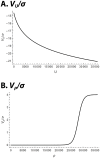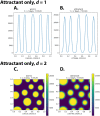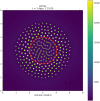A Keller-Segel model for C elegans L1 aggregation
- PMID: 34324494
- PMCID: PMC8354456
- DOI: 10.1371/journal.pcbi.1009231
A Keller-Segel model for C elegans L1 aggregation
Abstract
We describe a mathematical model for the aggregation of starved first-stage C elegans larvae (L1s). We propose that starved L1s produce and respond chemotactically to two labile diffusible chemical signals, a short-range attractant and a longer range repellent. This model takes the mathematical form of three coupled partial differential equations, one that describes the movement of the worms and one for each of the chemical signals. Numerical solution of these equations produced a pattern of aggregates that resembled that of worm aggregates observed in experiments. We also describe the identification of a sensory receptor gene, srh-2, whose expression is induced under conditions that promote L1 aggregation. Worms whose srh-2 gene has been knocked out form irregularly shaped aggregates. Our model suggests this phenotype may be explained by the mutant worms slowing their movement more quickly than the wild type.
Conflict of interest statement
The authors have declared that no competing interests exist.
Figures







References
Publication types
MeSH terms
Substances
Grants and funding
LinkOut - more resources
Full Text Sources

